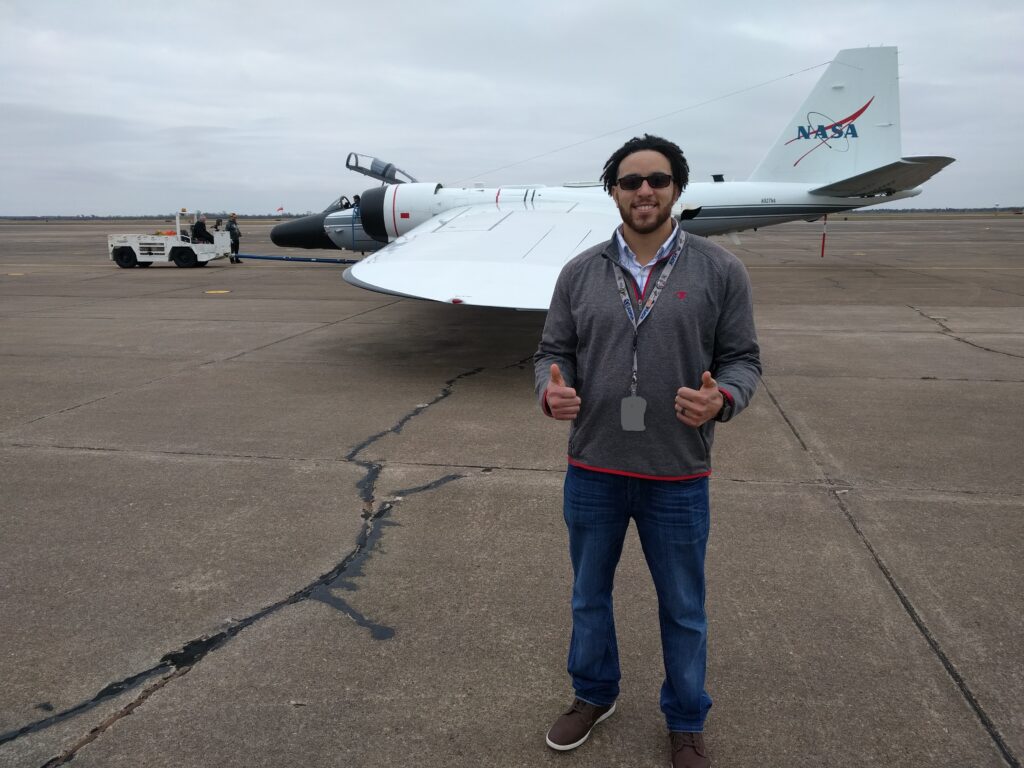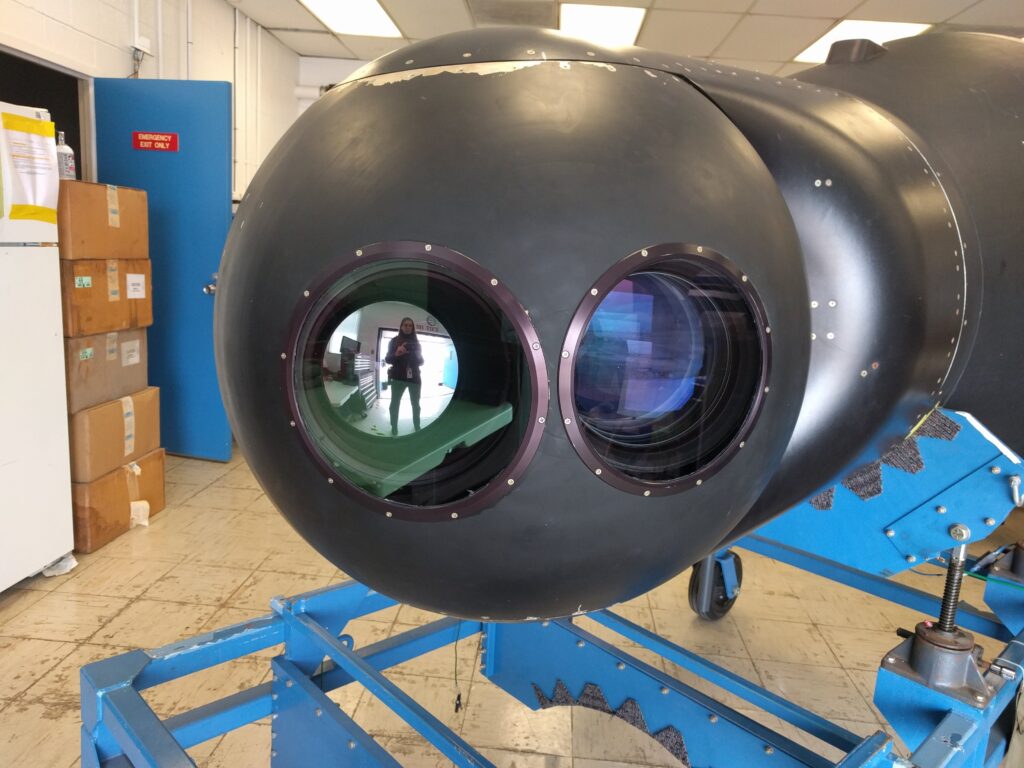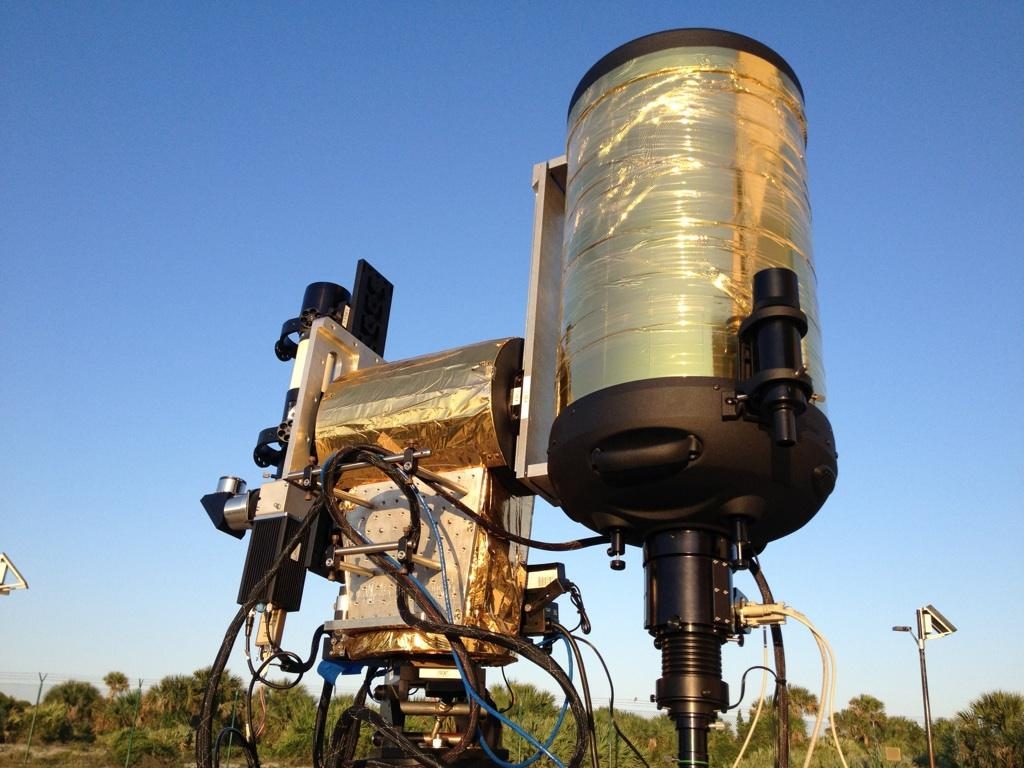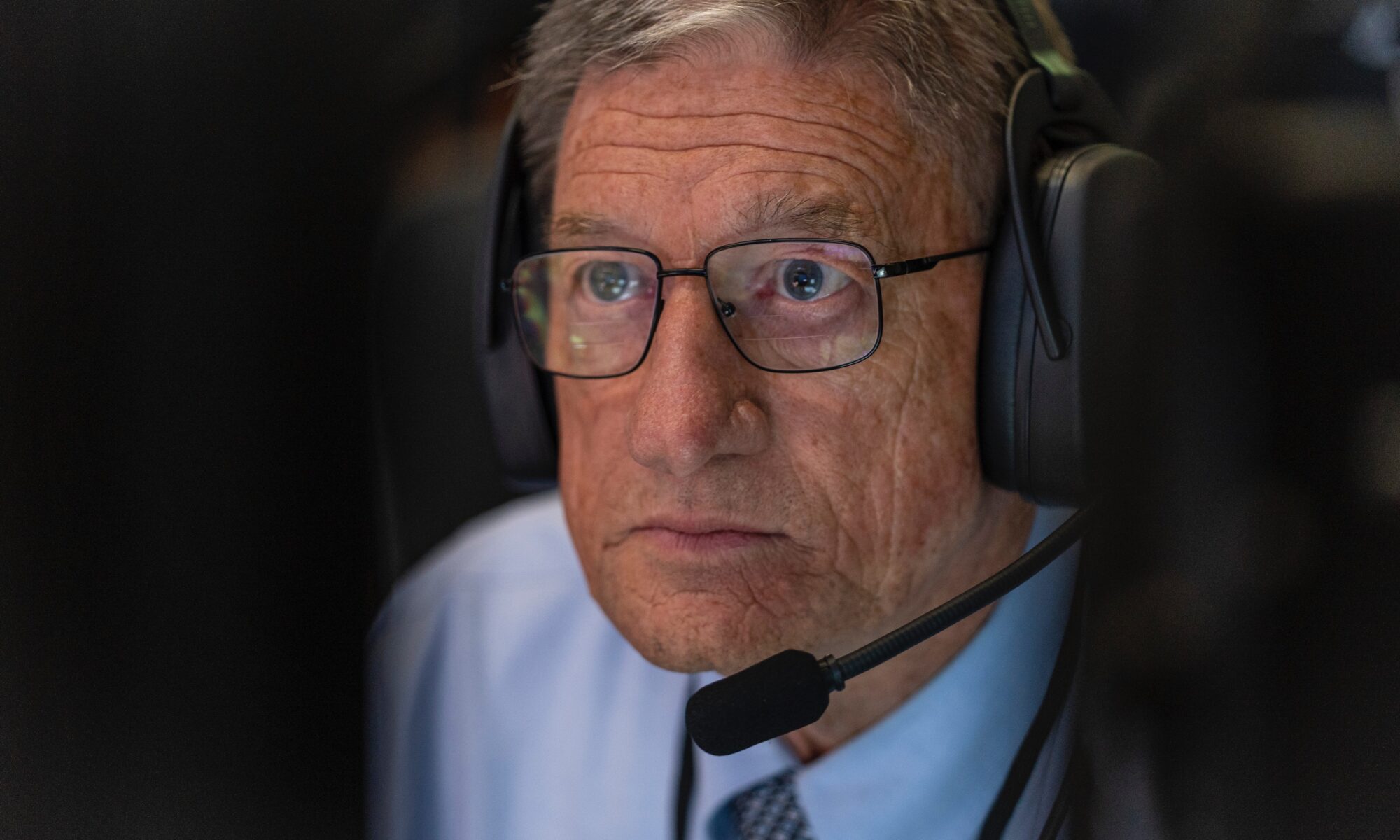As the day of an observation approaches, SCIFLI will generally deploy to mission control at the NASA Johnson Space Center and sometimes the launch or landing site. From there, they can follow essential progress and relay any required changes to the asset operators, both on the ground and in the air. With their careful preparation and quick thinking in mission control, SCIFLI has been able to accommodate many difficult and unpredicted conditions. These have included unexpected early reentry, delayed launches, and, in the case of one shuttle mission, STS-128, adapting to a new landing location while simultaneously dodging a hurricane. Access to video feeds and “tie-ins” to audio communications in mission control have been essential for adapting to these conditions in real time.
Air-based
In terms of aircraft for airborne missions, SCIFLI often partners with the WB-57 aircraft team at Ellington Field. The team can mount their imaging systems on the two-axis gimbal nose mount, allowing them to pivot in both pitch and roll to track the target. This creates a wide range of regard, forming a 200-degree cone of view in front of the aircraft. Two people will accompany the optical equipment on the WB-57: the pilot and the sensor operator, who controls the fine motion of the optical system’s pointing angle. For some missions, the team has also used the Gulfstream III and other passenger-oriented aircraft. In these cases, instead of mounting optical equipment on the nose of the jet, it is instead assembled inside the aircraft and special windows are installed to optimize viewing conditions.

The optical equipment used for airborne observation is also unique. For most missions, SCIFLI uses NASA’s DyNAMITE system. However, the team is also finalizing development of a SCIFLI-owned asset, the SCIFLI Airborne Multispectral Imager, or SAMI. This multi-spectral system can be much more selective of the wavelengths of light it focuses on, a significant advance in scientific imaging. SAMI is planned to be used for several upcoming missions, including Artemis I.

In terms of actual sensor operation, capturing a high-speed spacecraft from an in-flight vehicle can be a daunting task. Particularly for reentry missions, catching the target at horizon break with highly magnified optical systems requires exact knowledge of the target’s location. When working with the WB-57, trajectory files can be loaded directly into the imaging software on the aircraft, automatically determining the pointing direction of the optical equipment. The sensor operator can also make small adjustments to the “look angle” to keep the target squarely in the field of view.
Land-based
While SCIFLI’s primary focus is on in-flight imaging, we also help support ground-imaging. The team’s primary partner for ground observations is MARS Scientific, who is the nation’s civilian leader in long-range telescopic tracking and imaging of earthbound space vehicles. In order to support the MARS team, SCIFLI provides situational awareness to and from mission control as the observation progresses. SCIFLI can also provide some technical support to MARS Scientific, depending on the mission.

Calibration
The calibration of imaging assets is crucial to obtaining the highest quality data possible. Radiometric, spectral, and spatial calibration is conducted on each piece of equipment, and spot checks are constantly made to ensure that the equipment has not drifted from the calibration. Although calibration is performed by asset operators, the SCIFLI team can provide support as required. In the extreme case of the Hayabusa 2 mission, the asset operation and SCIFLI teams were limited to a hotel room due to pandemic restrictions prior to the observation and were able to perform calibrations on the city lights around them.
Data from mission planning can be essential to the calibration process. Expected brightness estimated in STK (Systems Tool Kit) can help sensor operators avoid over-saturation caused by over-exposure, or low signal-to-nose ratios caused by excessively low-exposure.

